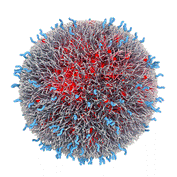Center, Biotechnology

Nebraska Center for Biotechnology: Faculty and Staff Publications
Document Type
Article
Date of this Version
2019
Citation
PLoS ONE 14(8): e0220568.
Abstract
Hyperinsulinemia affects 72% of Fanconi anemia (FA) patients and an additional 25% experience lowered glucose tolerance or frank diabetes. The underlying molecular mechanisms contributing to the dysfunction of FA pancreas β cells is unknown. Therefore, we sought to evaluate the functional role of FANCA, the most commonly mutated gene in FA, in glucosestimulated insulin secretion (GSIS). This study reveals that FANCA or FANCB knockdown impairs GSIS in human pancreas β cell line EndoC-βH3. To identify potential pathways by which FANCA might regulate GSIS, we employed a proteomics approach to identify FANCA protein interactions in EndoC-βH3 differentially regulated in response to elevated glucose levels. Glucose-dependent changes in the FANCA interaction network were observed, including increased association with other FA family proteins, suggesting an activation of the DNA damage response in response to elevated glucose levels. Reactive oxygen species increase in response to glucose stimulation and are necessary for GSIS in EndoC-βH3 cells. Glucose-induced activation of the DNA damage response was also observed as an increase in the DNA damage foci marker γ-H2AX and dependent upon the presence of reactive oxygen species. These results illuminate the role of FANCA in GSIS and its protein interactions regulated by glucose stimulation that may explain the prevalence of β cell-specific endocrinopathies in FA patients.


Comments
© 2019 Lagundzin et al.
Open access
https://doi.org/10.1371/journal.pone.0220568